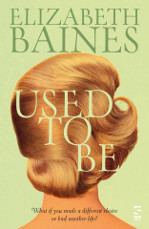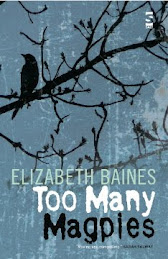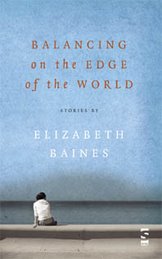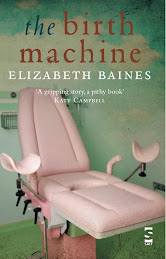Another fabulous volume in the series of Fashion sourcebooks by Emmanuelle Dirix from Goodman Fiell, edited by Charlotte Fiell.
As in the 30s Fashion volume (which I reviewed here), there's a wealth of fashion plate drawings, many previously unseen, and Hollywood stills, and there's a truly fascinating introduction by fashion historian Emmanuelle Dirix in which she counters a conception of fashion as irrelevant in wartime and the prevailing view of the war-time forties as a time when fashion went into abeyance. For most of the period, she points out, the fashion industry was of great interest to governments on both sides of the conflict, both for its economic importance and as a means of keeping up national morale. There are sections of the Introduction devoted to each of Germany, Britain, America and France, which show that the ways in which their wartime governments and populations engaged with fashion was more divergent, and much more complex, than has been generally considered.
In Germany, for instance, while Hitler condemned haute couture as part of a Jewish conspiracy - a merely money-making enterprise encouraging unhealthy lifestyles antipathetic to his 'Gretchen' ideal of the natural, healthy home-based German woman - the German populace was less convinced. German designers were only mildly influenced by Hitler's promotion of Trachtenkleidung, the traditional dress, if at all; the wives of Nazi party officials remained loyal to Jewish designers, and although makeup and hair dye was frowned on, while stocks remained available sales didn't decrease, and that of peroxide (in a perhaps ironic inversion of the German Aryan ideal) actually increased. The 'Aryanisation' of fashion stores went on apace, but Hitler was never less than keen to utilise the economic potential of the fashion industry, intending to move Europe's fashion capital to Berlin after the war. He formed the German Fashion Institute, appointing Magda Goebbels as honorary president, dismissing her soon but only because she espoused the notion of the liberated modern woman Hitler rejected by expressing her intention to make German women 'stylish and intelligent'. As the war proceeded and supplies of materials diminished and clothes production did indeed cease, the Nazis adopted fashion as propaganda, Joseph Geobbels backing a new fashion magazine Die Monde, intended entirely to keep up morale and presenting clothes either for export only or in fact imaginary and sometimes stamped 'unavailable'.
The illustrations from the book below, both from Iris Magazine, Leipzig, Summer 1942, show respectively the traditional costume as promoted by Hitler, and a fashion plate only mildly influenced by the look.
While up until the war Paris had been the dictator of global fashion, now austerity measures pointed the way in Britain and America to styles requiring less usage of materials: shorter skirts and fitted tight-waisted clothes for women, trousers without turn-ups for men, an absence of embellishment, drabber colours and a resort to synthetic fabrics (chemicals for dyes, silks, leather and wool etc being requisitioned for the war effort). Governments were closely involved in this, the British government establishing not only measures to restrict the use of materials, but also, highly aware of fashion as a morale-booster, instituting the Utility scheme, whereby (a restricted range of) good materials and well-made articles could be made available to all. The employment of women for war work meant that for the first time trousers were accepted wear for women (and not just the fashionable elite) and brought in the turban (for keeping hair away from machinery) which remained fashionable throughout the decade. Although this more mannish style became the unchanging silhouette for women's fashion throughout the period, there was much innovation in terms of detail, particularly with regard to accessories, nurtured by the 'Make Do and Mend' propaganda campaign headed, as the war went on, by the Women's Voluntary Service. Making do and mending became both a source of national pride (rather than as previously, with the rise of ready-to-wear garments in the 30s, a matter of poverty and shame) and an opportunity to express individuality and femininity; meanwhile the British government made efforts to secure supplies of lipstick and conducted its morale-boosting 'Beauty on Duty' campaign.
An illustration from the book showing Berketex Utility fashions, 1943 (copyright: Planet News/Science and Social Picture Library):
and another showing prep-inspired American knitted separates, separates being an important feature of a wartime wardrobe requiring warmth and adaptability (1945 and 1946):
The Paris fashion industry, meanwhile, remained relatively insulated from these effects. Towards the end of the 30s, Paris had been bringing in an extravagant nineteenth-century-influenced style (long, full and bustled skirts, much embellishment), and although the shows of autumn 1939 (just before the expected invasion of Poland) and spring 1940 showed influence of a more restrained style in daywear including military notes, and greater practicality in evening wear (such as long sleeves for dashing to air raid shelters), once Paris was cut off by the German occupation (June 1940) its fashion developed independently along those earlier lines, shocking the rest of the West with its opulence when the war ended in 1946.
These illustrations show, left, a luxurious 1942 Parisian cocktail dress in printed satin and tulle and with a full skirt, and, right, a 1941 Parisian evening gown with drapes requiring plentiful fabric:
Dirix tackles the general view that the survival of the Paris fashion industry was due to collaboration by Paris fashion designers with the Nazis, contending that the situation was more complex. Some Paris designers, she notes, fought closure by the Nazis as a matter of national pride and displayed other forms of resistance down to using patriotic colours in their designs, as in the following illustration, a 1945 cover of Modes de Paris featuring a romantically styled dress making luxurious use of materials but coloured red, white and blue:
Received opinion has it that the main Paris customers were Nazis, but Dirix points out that this would have been too small a market, and that patrons were more likely to be French collaborators and black marketeers. The culmination of this Paris look was Dior's sumptuous New Look, which was slow to take on in a shocked and disapproving world that, postwar, could ill-afford such designs anyway (though it took the world by storm by the 50s), and so the postwar years of the decade featured the two contrasting styles running side by side.
A coat by Dior, with generous shawl collar and full skirt, worn over a full pleated skirt (Album de Figaro, Winter Collections, 1947):
Once again, though, another wonderful source book for anyone with any level of interest in fashion, professional or otherwise.
1940s Fashion: The Definitive Sourcebook by Emmanuelle Dirix (Goodman Fiell), available here or from all good bookshops.
(All images reproduced above: copyright Fell Image Archive 2013, unless otherwise stated.)




















No comments:
Post a Comment